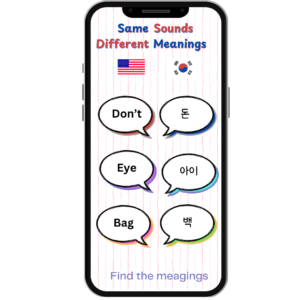Are you an American curious about how the cost of living in Korea stacks up against life back home? Whether you’re considering a move for work, study, or adventure, understanding the financial landscape is crucial. Questions like, “Why is cheese so expensive?” or “How can eating out be cheaper than cooking?” often leave newcomers puzzled. This guide delves into the living costs in Korea vs. the U.S., offering insights to help you plan better, adapt quickly, and embrace the unique quirks of each destination.
Note: Currency values fluctuate, and these comparisons are approximate.
1. Housing Costs in Korea vs. the U.S.
Housing is often the largest expense for individuals and families. In Korea, you’ll encounter unique systems like Jeonse, which involves large deposits but low monthly costs. Meanwhile, U.S. housing leans heavily on monthly rent payments.
- Korea: City-center apartments cost $500 to $1,000 monthly. Suburban homes are more affordable at $300 to $600. For Jeonse, deposits may run into tens of thousands of dollars, but significantly reduce ongoing expenses.
- U.S.: Urban apartments range from $1,500 to $3,000 per month, with suburban homes averaging $800 to $1,200.
Key takeaway: If you can manage a Jeonse deposit, housing in Korea may be more budget-friendly in the long term.

2. Groceries and Everyday Shopping
Groceries reveal the cultural emphasis on local vs. imported goods. In Korea, staples like rice and kimchi are affordable, but international products often carry a hefty price tag.
- Korea: Rice and vegetables are inexpensive, but imported goods such as cheese can cost over $8 per gallon.
- U.S.: Cheese, milk, and meat are far more affordable. A gallon of milk typically costs around $4, making dairy a staple for many families.
Key takeaway: Living in Korea may encourage a shift toward locally produced foods to save on grocery bills.
3. Transportation Systems and Costs
Public transportation in Korea is not only affordable but also impressively efficient. In contrast, the U.S. relies more heavily on personal vehicles and pricier ride-sharing options.
- Korea: Subway rides cost $1.20 to $1.50, with taxis starting at $2.50.
- U.S.: Public transit prices vary, with subway rides in NYC costing $2.75 and ride-sharing services often surpassing $10 for short trips.
Key takeaway: Korea’s public transport system offers an economical alternative to car ownership.
4. Dining Out: A Culinary Contrast
Food is a cultural cornerstone, and in Korea, dining out often costs less than cooking at home, a trend opposite to that in the U.S.
- Korea: Casual meals range from $5 to $10, and mid-range dining costs $10 to $20.
- U.S.: Dining out begins at $10 to $15 for casual eateries and $15 to $30 for restaurants.
Key takeaway: Affordable dining in Korea is perfect for foodies on a budget.

5. Fuel Costs: Korea’s Premium Gasoline
Owning and driving a car in Korea comes with a high price tag for fuel, while the U.S. boasts significantly cheaper gas.
- Korea: Gasoline averages $6.50 per gallon, with diesel slightly cheaper.
- U.S.: Gas prices hover around $3.50 per gallon, with diesel at $4.
Key takeaway: Public transportation is not just cheaper but also more practical for navigating Korea.

6. Utilities and Internet Expenses
Utility costs vary widely, but Korea generally offers a more economical package.
- Korea: Utilities for a 900 sq. ft. apartment cost $100 to $150 monthly, with high-speed internet priced at $20 to $30.
- U.S.: Utilities range from $150 to $300, while internet costs are $50 to $70.
Key takeaway: Korea’s internet and utility costs are a pleasant surprise for digital nomads and expats.
7. Healthcare: Universal Coverage vs. Insurance Woes
Healthcare expenses illustrate a stark difference in approach, with Korea offering universal healthcare and the U.S. leaning on private insurance.
- Korea: Doctor visits cost $5 to $10, and medications are highly affordable.
- U.S.: Without insurance, a single doctor visit can range from $100 to $300.
Key takeaway: Korea’s healthcare system provides accessible care for a fraction of the cost in the U.S.

8. Education: University and Private Learning
Education costs reflect broader societal values, with Korea’s hagwon (private tutoring) culture contributing significantly to expenses.
- Korea: University tuition ranges from $5,000 to $8,000 annually. Private tutoring can add thousands more.
- U.S.: Public university tuition averages $10,000 to $25,000, with private institutions charging significantly more.
Key takeaway: While tuition costs are lower in Korea, hagwon fees can add up.
FAQs
Conclusion
Living costs between Korea and the U.S. showcase intriguing contrasts. While Korea excels in affordable healthcare, dining out, and public transportation, the U.S. offers more economical fuel and grocery options. By understanding these differences, you can better plan your finances, whether moving abroad or exploring a new culture.
Visual Aid: Cost Comparison Chart
| Category | Korea | U.S. |
|---|---|---|
| Housing (1BR) | $500–$1,000 Monthly(city) | $1,500–$3,000 Monthly(city) |
| Groceries (Milk) | $8/gallon | $4/gallon |
| Transportation | $1.20–$1.50 per ride | $2.75 per ride (NYC) |
| Gas (per gallon) | $6.50 | $3.50 |
| Diesel (per gallon) | $5.80 | $4.00 |
| Dining Out | $5–$20 | $10–$30 |
| Utilities | $100–$150 | $150–$300 |
| Internet | $20–$30 | $50–$70 |
| Healthcare Visit | $5–$10 | $100–$300 |
Understanding Currency Variations
Fluctuations in exchange rates and purchasing power significantly impact the relative affordability of life in Korea vs. the U.S. Monitoring current rates and adjusting spending habits accordingly is crucial for budget management.
Suggested Links for Further Reading:
Budgeting Tools for Expats:
- Top Budgeting Apps for International Students & Expats: This article reviews various budgeting apps suitable for those living abroad, helping manage finances effectively. Zolve
- Wallet: The Best Budgeting App for Expats: An in-depth look at the Wallet app, highlighting its features tailored for expatriates. The Portable Wife
Living Costs in Major U.S. Cities:
- Cost of Living in America’s Major Cities: An analysis of living expenses across various U.S. cities, providing insights into housing, groceries, and more. 24/7 Wall St.
- Cost of Living in the United States: 2202 Cities Compared: A comprehensive comparison of living costs across numerous U.S. cities, offering detailed data for informed decision-making. Living Cost







